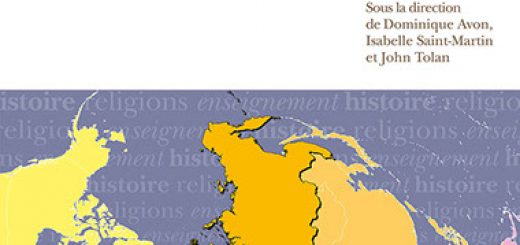15 centuries of religious cohabitation: what about tomorrow?
John Tolan and Dominique Avon, co-directors of the IPRA, have both published an article in the issue 47 of Place Publique, a newspaper settled in the heart of the Nantes / Saint-Nazaire agglomeration and focusing on city issues.
In his article (‘Christians, Jews, Muslims : how did they learn to live together?’), John Tolan gives numerous examples (taken from the RELMIN projet) on how the relationships between Christians, Jews, and Muslims were regulated in the Middle-Ages in matters as diverse as food, access to justice or sexual intercourses. He talks about the protected but subordinate status often granted to religious minorities by the ruling majority as well as about the large-scale expulsions of religious minorities that occured several times during the Middle-Ages. From the end of the Middle-Ages onward, the fact that the whole population of a country had to share the same faith has slowly became the rule, even if examples of religious cohabitation within a country could still be seen (for instance in the Polish-Lithuanian Comonwealth or in the Ottoman Empire) This changed in the eighteenth century (with the Enlightenment) and throughout the nineteenth and twentieth centuries, when the idea of religious tolerance and of a state not taking part in religious matters became widely accepted. Still, for all the secularization that has taken place in the twentieth and twenty-first centuries, a religious comeback is noticeable in Europe, especially since the 70’s.
Dominique Avon’s article (“The European religious authorities faced with the shock of modernity”), first presents the two dominant religious models of the nineteenth century(the English one, where a state religion cohabits with the promotion of rights for other religious communities and the French one, where it is considered that true equality is only based on the rights granted to citizens – and not to groups recognized as a religion). Then it addresses the place of religions and religious authorities during the world wars and european dictatorships before moving on to the Vatican II church councile, that has started to strengthen, although cautiously, inter-religious dialogue. Finally, it notes the changes brought in the european religious landscape by the immigration of previously “exterior” people: muslims, hindus, sikhs and buddhists, whose religion has not been taken into account immediatly and not in the same way either, depending on the european countries and institutions. In conclusion, a hightlight is made on four tendencies of the European societies of the 2000’s : a large chunk of the European citizens continue to drift away from religion and, at the same time, religion is turned into an ethnic issue; also, there is a somewhat akward feeling between confessions but religious leaders of different faiths gather to discuss important ethical questions.






